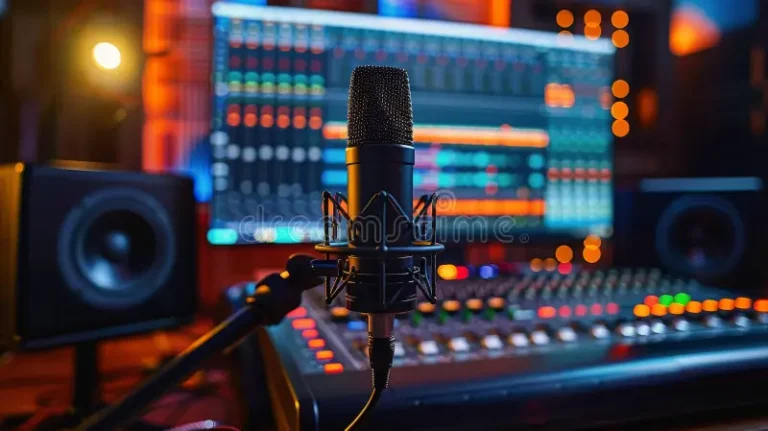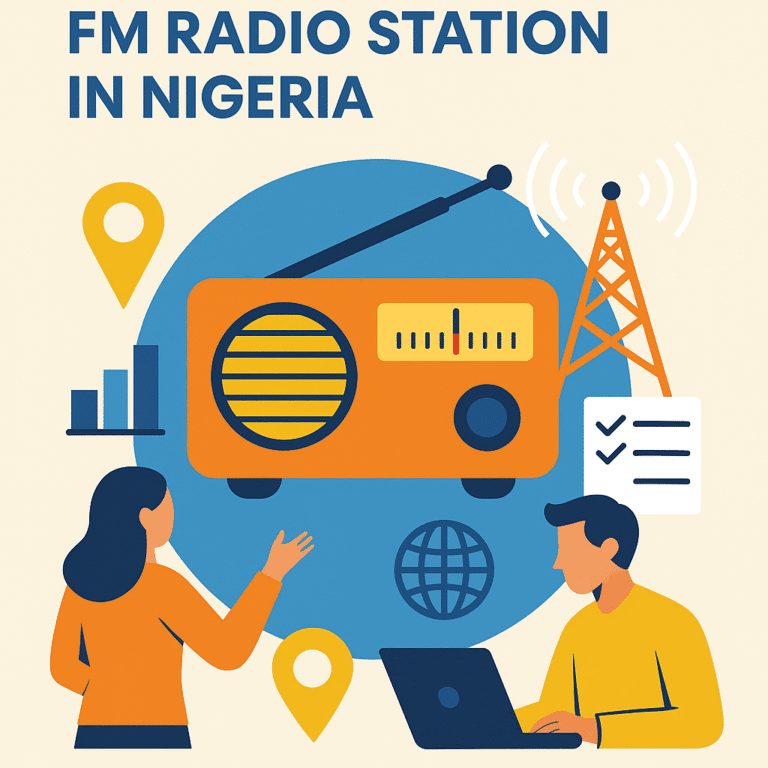Why Every Radio and Media House Needs a Modern Website in 2025
1. The Evolving Landscape of Media Consumption
The way Nigerians—and indeed, global audiences—consume media has transformed dramatically. With over 80% of young people now engaging with digital content daily, traditional radio and television must evolve to stay relevant.
Today’s audiences prefer on-demand, interactive, and mobile-friendly content. Platforms such as YouTube, Spotify, TikTok, and various streaming apps have conditioned users to expect instant access to news, entertainment, and live programs.
For radio and media houses, having a modern website is no longer optional—it’s a necessity. A professional, fast-loading, and mobile-optimised site serves as your digital broadcasting hub, offering live streaming, podcasts, breaking news, and multimedia updates. It also helps retain your audience long after the broadcast ends.
A robust website transforms a traditional station into a digital media brand, capable of reaching audiences across Nigeria and beyond, 24/7.
Read also: Types of Specialised Radio Stations: From Traffic Radio to Hospital Radio
2. Integration of Multimedia Content
A key feature of any modern media website is the ability to integrate multimedia content—from videos and podcasts to live streaming. Nigerian audiences, especially younger demographics, expect more than just text or audio—they crave interactive, visual experiences.
Here’s how multimedia integration boosts engagement:
- 🎧 Podcasts: Radio houses can repurpose talk shows, interviews, and discussions into on-demand podcasts that listeners can enjoy anytime.
- 📺 Live Streaming: Whether it’s a live morning show, political debate, or event coverage, embedding live streaming directly into your website keeps users connected.
- 📱 Social Media Integration: Linking your station’s Instagram, Facebook, or X (Twitter) accounts builds community and encourages content sharing.
- 📰 Video Highlights: Short video clips of top stories, news recaps, and entertainment updates drive audience retention and shareability.
By 2025, the most successful media houses will be those that blend traditional broadcasting with digital storytelling, ensuring listeners remain connected both on-air and online.
3. Enhanced User Experience and Accessibility
A modern website is not just about good looks—it’s about usability, accessibility, and audience trust.
Your listeners should be able to visit your website, navigate easily, and find what they’re looking for—be it a live stream, news story, or contact form.
Here’s what to focus on:
- Responsive Design: Your site should look perfect on desktops, tablets, and smartphones alike.
- Clear Navigation: Menus, categories, and search bars should be easy to use and logically structured.
- Fast Loading Speed: A delay of even 3 seconds can cause users to leave—optimise your images, hosting, and code.
- Accessibility: Add alt text to images, implement keyboard navigation, and use readable fonts to accommodate all users, including those with disabilities.
By improving accessibility, your media house not only complies with global web standards but also builds a stronger, more inclusive audience community.
Read also: The Future of Radio Broadcasting in Nigeria’s Digital Era
4. SEO and Analytics for Growth and Engagement
Search Engine Optimisation (SEO) is the digital backbone of any media website. It ensures that your content ranks well on Google when users search for news, programs, or stations in Nigeria.
SEO Tips for Media Houses
- Use Relevant Keywords: Include local keywords like “radio station in Kano,” “online media in Nigeria,” or “listen live Lagos radio.”
- Optimise Metadata: Write keyword-rich titles, meta descriptions, and image alt tags.
- Publish Consistently: Regular updates (news posts, blog articles, podcasts) signal to Google that your site is active and authoritative.
- Ensure Mobile-Friendliness: Over 70% of Nigerian internet users browse on smartphones.
Analytics: The Secret to Continuous Improvement
By integrating tools such as Google Analytics, Search Console, or Matomo, you can track your audience’s behaviour—what they read, when they listen, and how long they stay.
This insight helps tailor future content to your listeners’ preferences, resulting in stronger engagement and higher ad revenue.
5. Brand Credibility and Monetisation Opportunities
In 2025, credibility is everything. A well-maintained, professionally designed website strengthens your brand identity and attracts advertisers.
Here’s how:
- Online Advertising: Sell ad spaces directly on your website or through platforms like Google AdSense.
- Affiliate Marketing: Promote brands relevant to your audience (e.g., telecoms, gadgets, or fintech).
- Sponsored Posts: Collaborate with businesses to publish paid articles and announcements.
- Event Promotions: Use your platform to market local events, concerts, and radio-sponsored programs.
Your website becomes both a content hub and a revenue generator, transforming traditional broadcasting into a sustainable digital business model.
6. Future-Proofing Your Media House
By 2025 and beyond, the most successful radio and media houses will be those that embrace digital transformation. Having a modern website gives your brand global visibility, enhances listener loyalty, and creates new opportunities for engagement and monetisation.
The transition from traditional to digital media is not just a trend—it’s the future of broadcasting.
Read also: Marketing Strategies to Grow Your Radio Station Listenership
Conclusion
Every radio and media house in Nigeria must recognise that a modern website is as important as the transmitter itself. It’s your digital home, your community centre, and your gateway to the global audience.
From SEO and analytics to multimedia content and accessibility, investing in your website today is investing in your station’s future.





